The Babić Wine Comeback: A Story Of Resilience And Potential
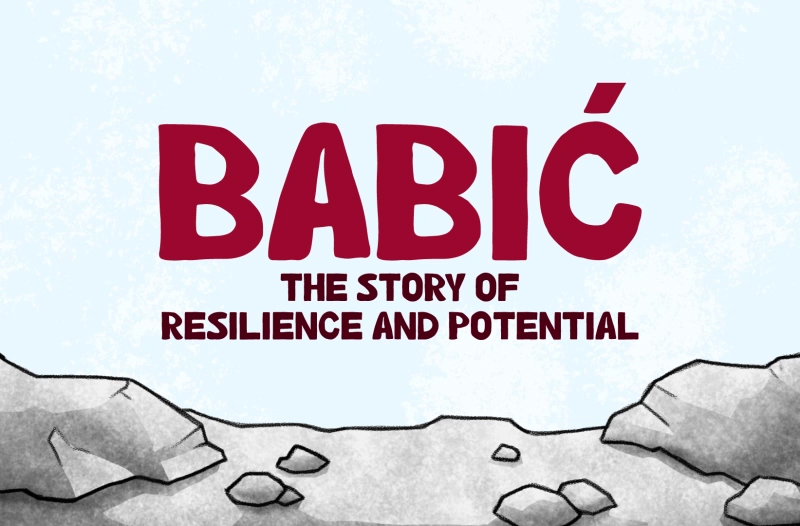
Along with Plavac and Crljenak (Tribidrag, Zinfandel, Primitivo), Babić is among the most essential native Croatian wine varieties.
Traditionally grown in the terraced vineyards of Primošten and in Šibenik county, where it has been present since ancient times, Babić has the potential to produce exceptional wines of the highest quality with a clear and unmistakable touch of astonishingly complex terroir in which it thrives. Stone walls that interwreathe steep Bucavac appellation, spreading down to the crystal clear, deep blue Adriatic Sea, create an illusion of “stone lace” wrapped around vines. These breathtaking vineyards are true “works of art” and the symbol of hard human labour.
The story of Babić
Local people from the stretch from Trogir to Šibenik were aware of a strong connection between the Babić grape and the austere and rugged Primošten vineyards, as since the beginnings of viticulture in this area, Babić was the leading variety (if not sole!) of the Primošten region.
Grown on poor, karst limestone soils, Babić is a variety that, with good winemaking skills, can produce one of the most balanced and unique red wines from the Dalmatia wine region.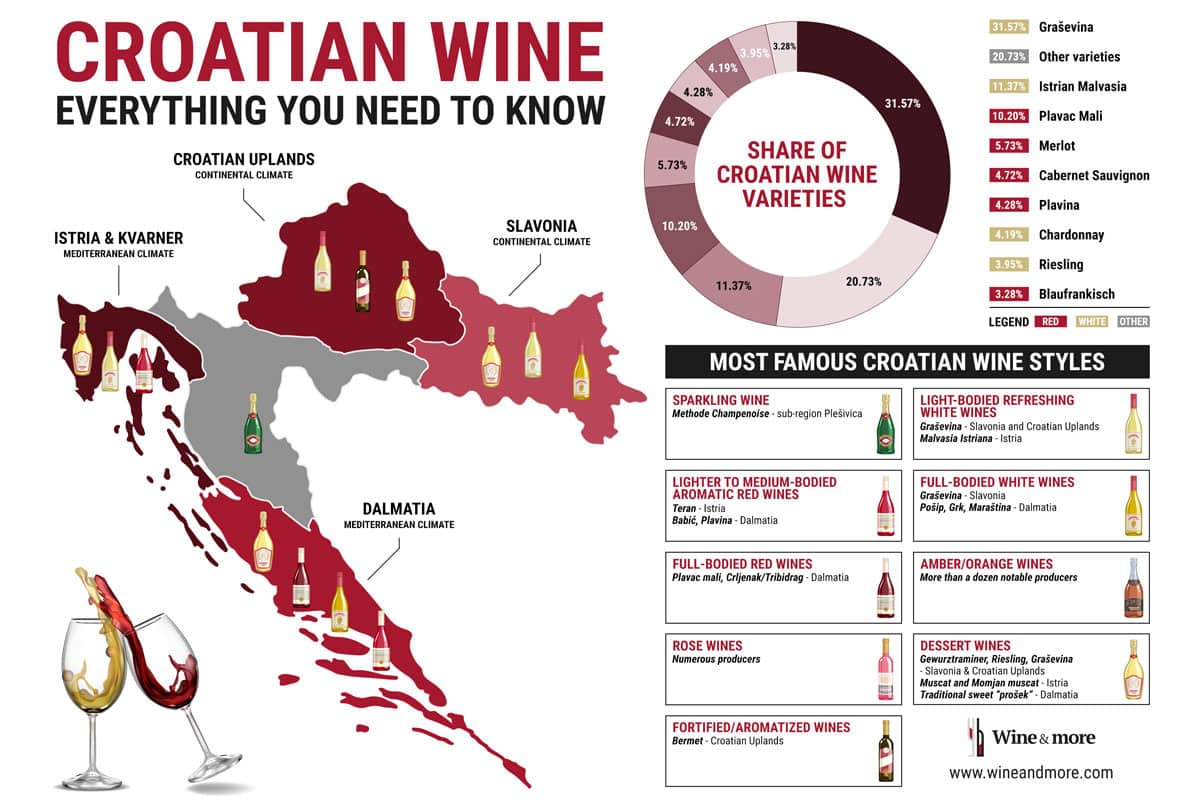
With the right winemaking techniques, Babić embodies all the essentials to obtaining a great wine, including perfectly balanced extract, generous acids, tannins, attractive aromas, impressive intensity of taste, and long-lasting flavour.
Moreover, Babić is remarkably adaptable to the hot Mediterranean climate, retaining its freshness even during the driest years.
Babić, a genetic cousin to Plavac Mali, showcases the highest quality when cultivated on rocky and sunny slopes in extreme conditions.
What sets Babić apart from Plavac is its ability to maintain acidity, resulting in vibrant and lively wines.
The key to a perfect bottle lies in the delicate balance between fullness and ripeness, with specific marasca cherry fruitiness and mineral elegance.
Babić is an undisputed terroir wine! The terraced vineyards above Primošten represent truly fascinating sights and are among the must-visit world vineyards.
The best locations for Babić are in the coastal zone, emphasising Primošten and its locations Bucavac and Podstrana. However, some new locations are nearby, especially Jadrtovac, where awarded Babić wines are produced.
Bucavac and its stone-laced vineyards
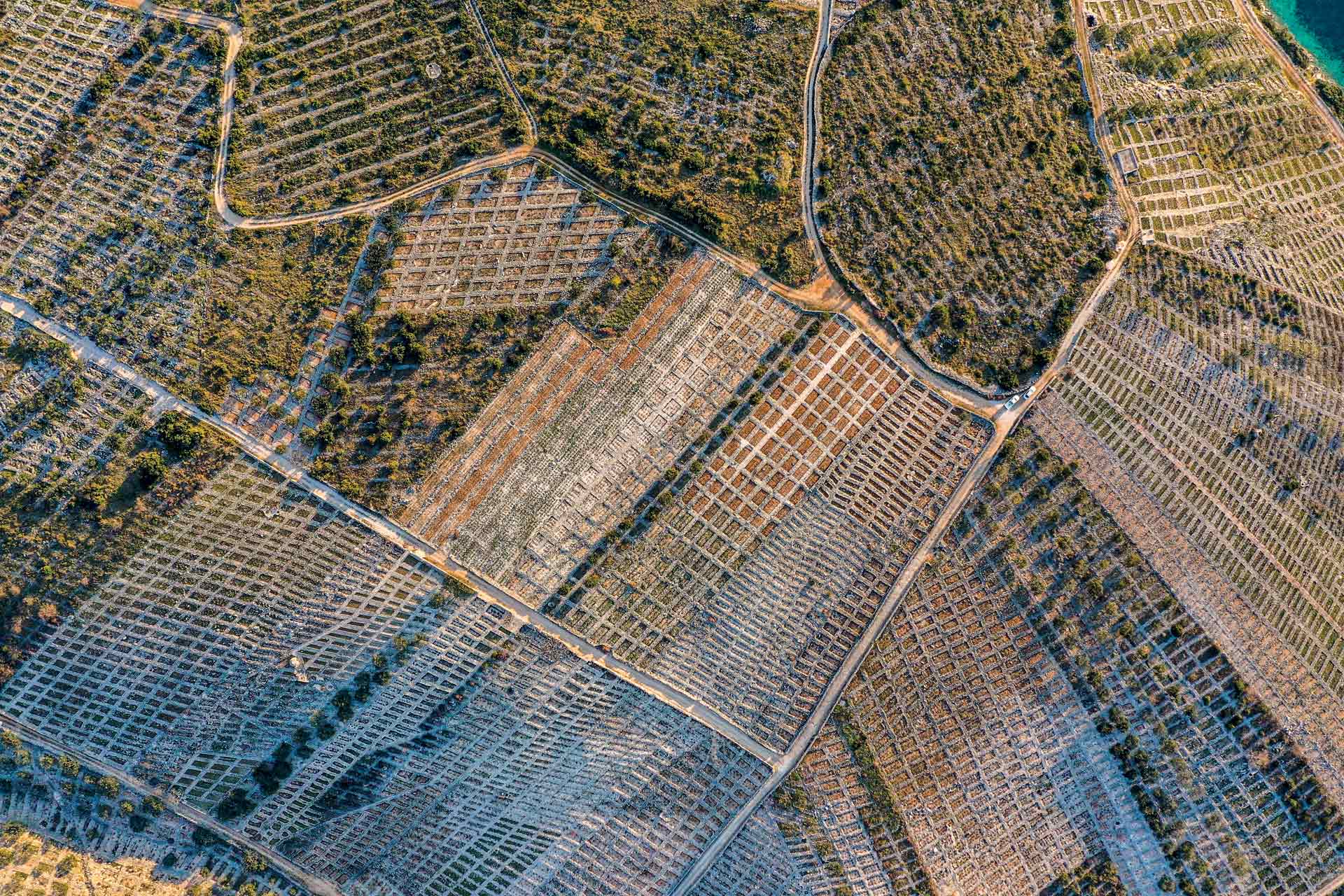
The growing conditions for Babić grapevines can be truly extreme. One of the most beautiful vineyard sites for Babić – Bucavac near Primošten – is known for a real struggle for survival.
There, young grapevines need 10+ years to reach their full potential, unlike in some other, more moderate positions, where it is known that young vineyards reach their best already at 5-7 years old.
If you visit Primošten, you will see stone-laced vineyards that are a true work of art, made and farmed only by human hand. Stone walls are a part of the Bucavac for the beginning of the grape growing here.
Wine growers used to dig stones to have a place to plant the vines. The stones had to be put somewhere, so they created distinct vistas around the vineyards, now called the lace necklace.
No machinery can reach “vlačica” and “tirade,” unique stone shapes of this vineyard.
Bucavac is a breathtaking appellation shaped by hard-working local people, their understanding, and their synergy with the natural surroundings. Severe conditions, steepness, and extreme summer temperatures mean that working in these vineyards means blood, sweat, and tears.
The soil in the vineyard here has a higher ratio of rocks, ideal for the quality of Babić wines. Relatively little rain falls on Bucavac while the abundance of sun and wind help the vines to dry off, preventing the diseases most naturally.
If you think the summer temperatures are extreme, try walking on Bucavac in the winter when the wind can be so fierce that the county had to invest in building additional, higher stone walls to protect smaller bush vines that try to grow.
That same wind can be so severe on Bucavac that it is often known for breaking the branches, reducing the yields even more.
Against all odds (or maybe because of it), high temperatures, extreme winds, and poor soil with high rock content, Babić vines extract the best of this land, producing one of the country’s most highly regarded red wines.
Yields here are the first indicator of the premium quality of the grapes, often giving not more than 2-3 bunches of grapes.
The most expensive Babić grapes are picked in this appellation, sometimes twice as expensive as Babić from other locations.
When you step on this land, you immediately know why. Not only are the wine growers fighting these extreme conditions, but so does the vine in a desire to survive.
The roots have to go deep into the karst and limestone soil to extract nutrients and water in scarce amounts.
The vines on Bucavac are only about 50 centimetres high. Winemakers tell us that, to grow vines here, one needs to kneel before them at least 4-5 times a year like they’re “the holly grapevines.”
The yields are as low as possible with some of the vines. Because of this, Babić wines have an extreme concentration of fruit aromas and flavours with real terroir signature – withdrawn deep from the karst soil in the vineyards.
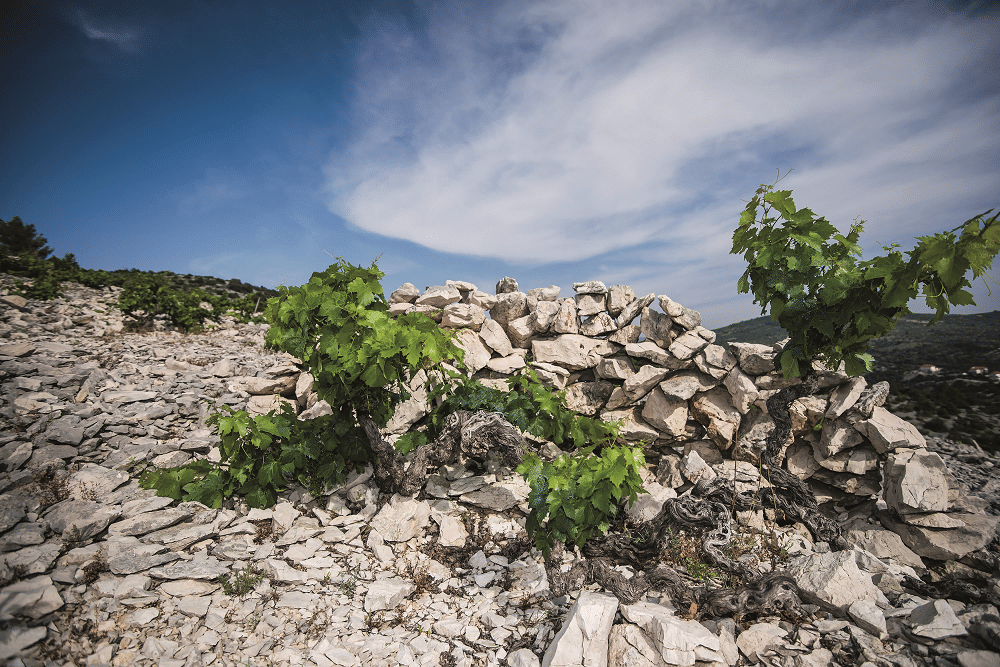
What is Babić wine?
As a type of red wine originating from the Dalmatia region of Croatia, Babić grapes are characterised by small, thick-skinned berries, and they thrive in the unique terroir of Dalmatia, where the climate and soil conditions contribute to the grape’s distinct flavour profile.
The grape variety, known as Babić, is native to this region. Babić wine is renowned for its rich and complex flavour. It typically exhibits aromas of red fruits, particularly marasca cherry, spices, and subtle earthy notes. It offers a delightful combination of flavours on the palate, often including notes of dark fruits and Mediterranean herbs. The wine is known for its balanced acidity and tamable tannins, especially compared to Plavac mali, which gives it a refreshing and lasting finish.
This wine pairs well with many dishes, particularly those found in Dalmatian cuisine, such as lamb and seafood. Babić’s versatility and unique flavour make it a favourite among wine enthusiasts and food lovers.
Babić wine has gained international recognition recently and has become a sought-after collectable due to its limited production and intriguing history. It has captured the attention of wine connoisseurs and investors alike, making it an increasingly popular choice in the world of fine wines.
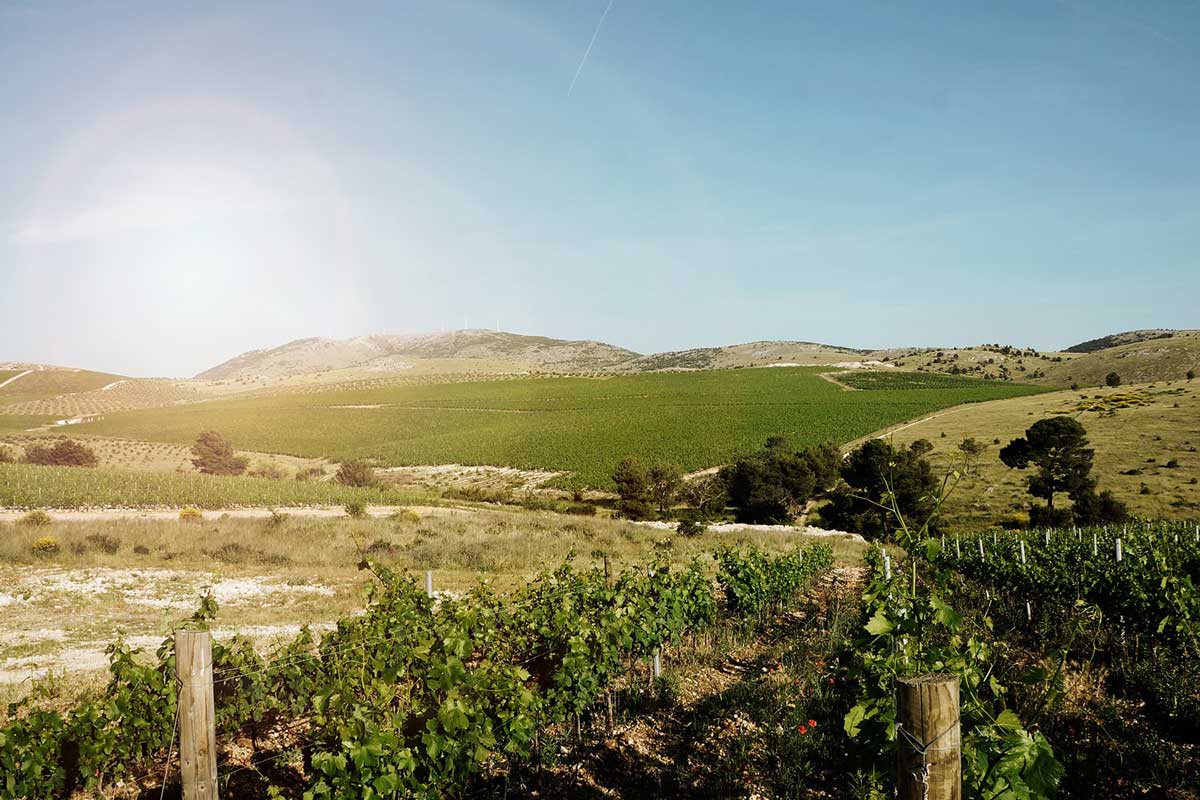
What is the Babić grape similar to?
Babić and Plavac Mali are cousins, but they are not similar. The greatest value of Babić is that this variety is different from every other grape.
In addition, there are two types of this variety – Babić Mali and Babić Veliki. They differ in the size of the cluster, which is why they got their name (“mali” means “small”, “veliki” means “big”).
Babić mali has a greater ability to accumulate sugar. That is why the wines from Babić are a little fuller and with more alcohol.
If necessary to compare this type of Babić to an internationally known variety, it makes sense to compare Babić to Syrah. Babić and Syrah share similarities in their spiciness and complex flavour profiles.
Both grapes can display hints of Mediterranean herbs and spices. Syrah, like Babić, is known for its tannin structure, which can provide a structured and long-lasting finish.
In terms of achieving balanced wines with both freshness and fuller body, including tannin structure, and coming from impossibly difficult stony terrains, Babić is more similar to Spanish Tempranillo.
This harmonious combination of acidity, fruitiness, and tannins results in refreshing and full-bodied wines, usually additionally fine-tuned with oak-barrel ageing.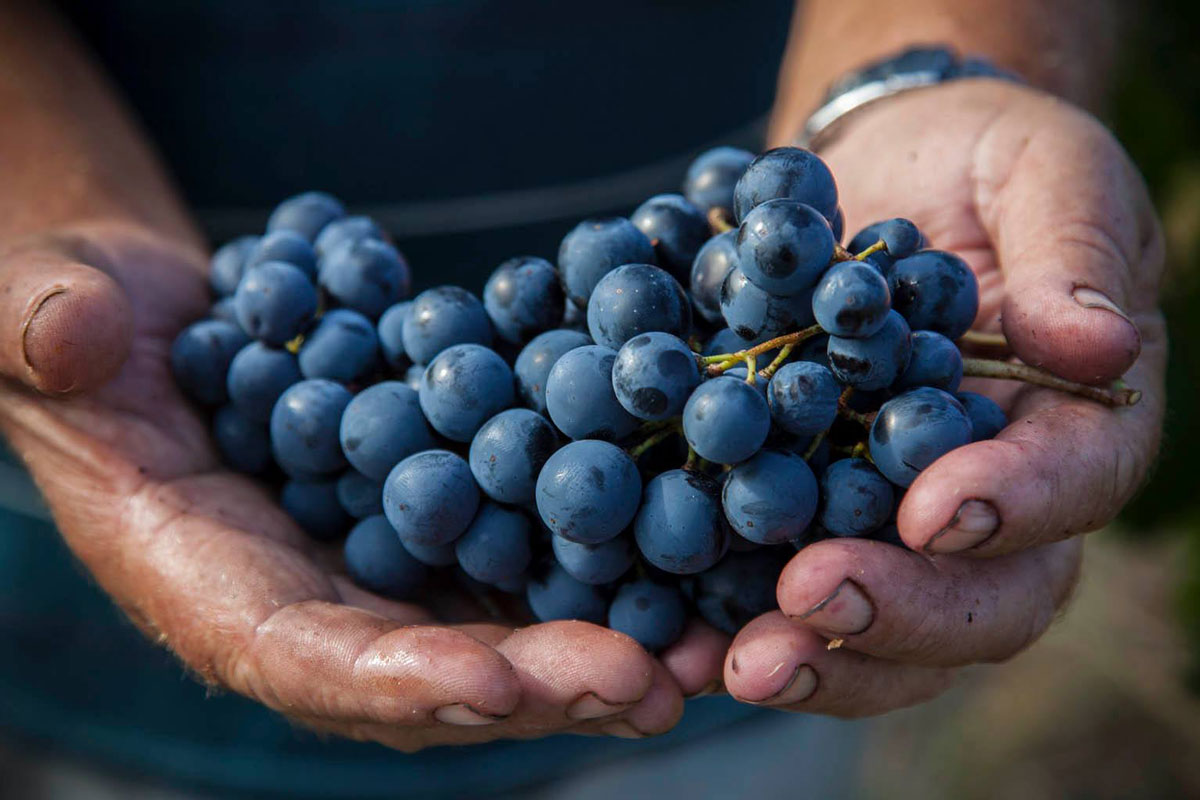
It is important to perceive Babić as a medium to fuller-bodied wine, as it is never recognisable in light interpretation. Of course, this doesn’t mean Babić can’t be elegant. On the contrary, some of the best and long-lived Babić wines are delicate and complex.
Compared to other indigenous red Dalmatian varieties, Babić shares little similarities with Plavac mali and Crljenak (Tribidrag). However, Babić is often compared to these varieties, mainly because these are the most prominent Dalmatian red varieties.
Regarding its structure and aromatic profile, comparing Babić with balanced examples of indigenous red Dalmatian varieties, such as Darnekuša, Plavina, or Babica, makes more sense.
Again, it’s important to note that while Babić shares some characteristics with these grape varieties, it also has unique qualities that make it distinct.
Babić wine taste
Babić gives rich, velvety reds concentrated in fresh and ripe fruit flavours, juicy cherries, herbs found over the Mediterranean, spices from the oak ageing, and a magnificent body.
Preserved acidity makes it easy to enjoy a glass of Babić, even on the hottest summer days.
From the best positions, it shows the strength of the vine’s ability to survive everything nature throws in the vineyards, extracting the unique taste of the soil deep under.
Prized for the amazing freshness it can preserve, Babić wines give you the sense of “authentic Dalmatia”!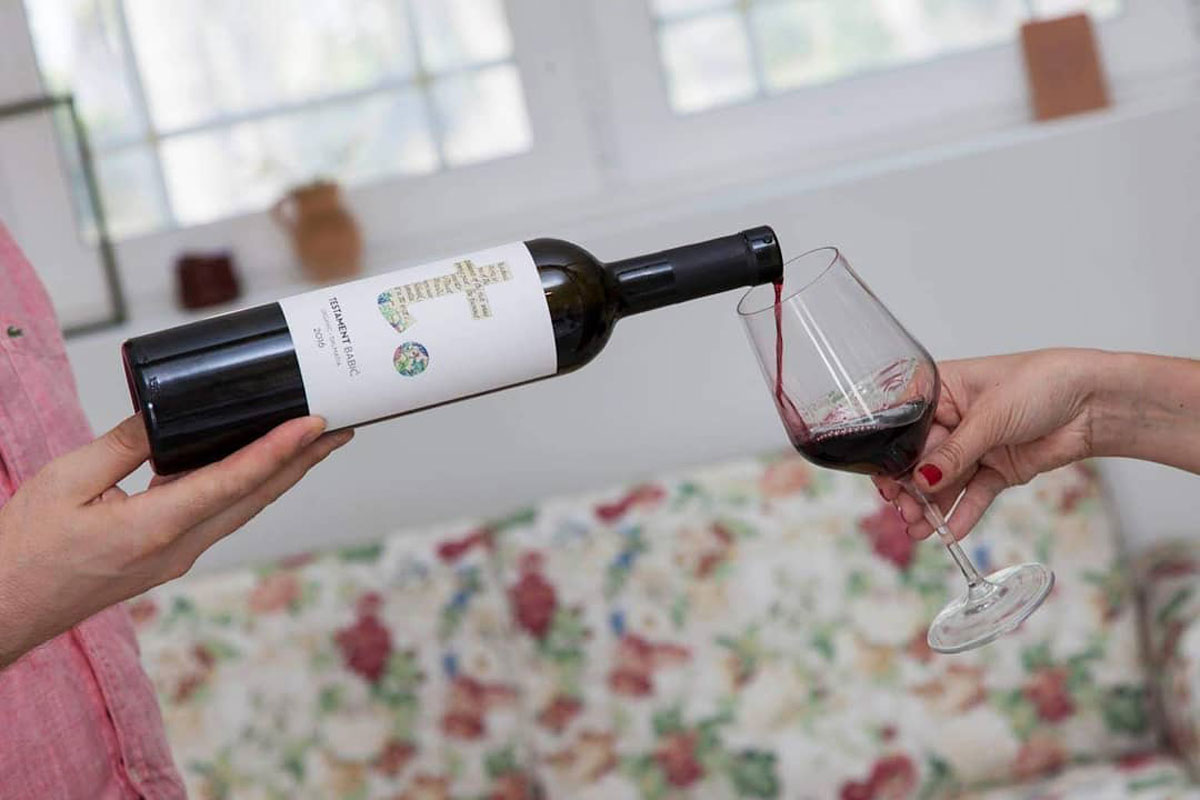
A general profile of Babić wine is as follows:
- Medium to full body: Babić is best when made from ideally ripe grapes that naturally achieve a fuller body.
- Tannin structure: Tannin levels are moderate to high. This provides structure to the wines, giving them a pleasant mouthfeel.
- Acidity level: The preservation of acidity is one of the critical advantages of Babić. This enables well-balanced wines that are both refreshing and fuller-bodied.
- Barrel ageing: Babić enjoys ageing in wood to soften its tannin and to benefit from micro-oxygenation. It also requires careful and delicate use of wooden barrels for ageing.
- Difficult terroir: Babić is a variety that can thrive from a fistful of dirt surrounded by stone and extreme climate conditions.
- Flavour complexity: Babić displays a range of flavours. Fruitness, herbaceousness, earthiness and minerality, all in a unique way.
Babić’s fruit profile is distinctively red toward the uniquely aromatic marasca cherry, another indigenous fruit variety of Dalmatia. Higher ripeness achieves darker fruit notes.
With its unwavering strength and liveliness, Babić, the bold and vivacious red wine variety, achieves a medium to full body and high concentration but never compromises its firmness and vibrancy.
It is a rarity among warm climate wines, as few achieve the perfect balance between richness and liveliness that Babić masters in the hands of skilled winemakers.
It takes a special vineyard and a talented winemaker to bring out the best in Babić, but the result is a wine that stands out from the rest with its unique and captivating flavour profile.
Babić wine revival
Šibenik, as the centre of the wine culture in the region, gathers visitors from around the world. It is well known for its cultural heritage and the gourmet wine and food offered.
Visitors can enjoy wine bars hidden in the narrow streets, Michelin-star restaurants, and luxurious hotel resorts.
The most important tip while visiting Šibenik for wine lovers is that in just a 15-minute drive, they can walk through the stunning vineyards of Babić.
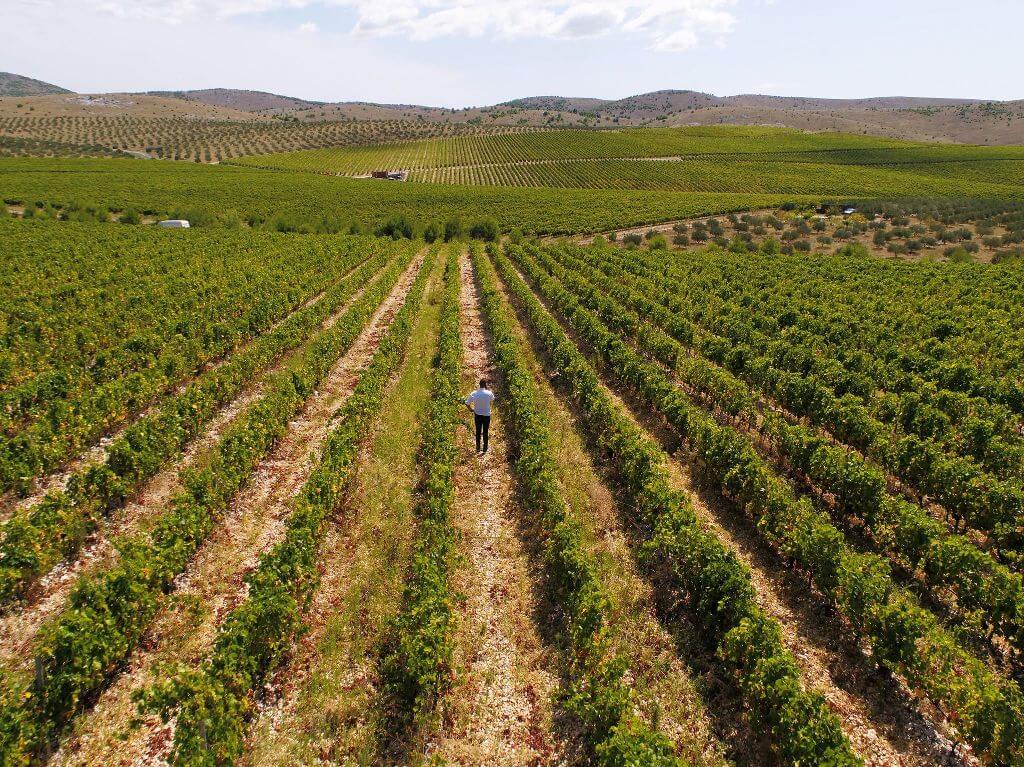
The quality of Babić wines has been increasing in recent years, as a new wave of good Babić wines has appeared from winemakers such as Gracin, Testament, Prgin, Rak, Markus, Mark Pulley from Delusional Winery, and others.
Jadrtovac is a spectacular, eye-catching 300 hectares of land where Babić and olive groves spread over the gently rolling hills.
It has the potential to become the best visitors’ site for enjoying wine because few wineries have opened up there and offer visitors a unique experience to taste their excellent native varieties
Notable Babić producers
Testament Winery
Testament Winery, owned by a Swedish fund under the supervision of the oenologist Juraj Sladić, shows the potential for serious Babić wines. Testament vineyards in Jadrtovac are in the wine-growing region of Northern Dalmatia, near the medieval town of Šibenik.
With the unique climate and the specificity of the soil. This centuries-old survival ritual is felt and seen in Testament wines’ intense, deep colours, flavours, and aromas.
Testament wines are created in an organic production process with the benefits of the region’s special microclimate and soil, giving them a particularly rich and complex taste 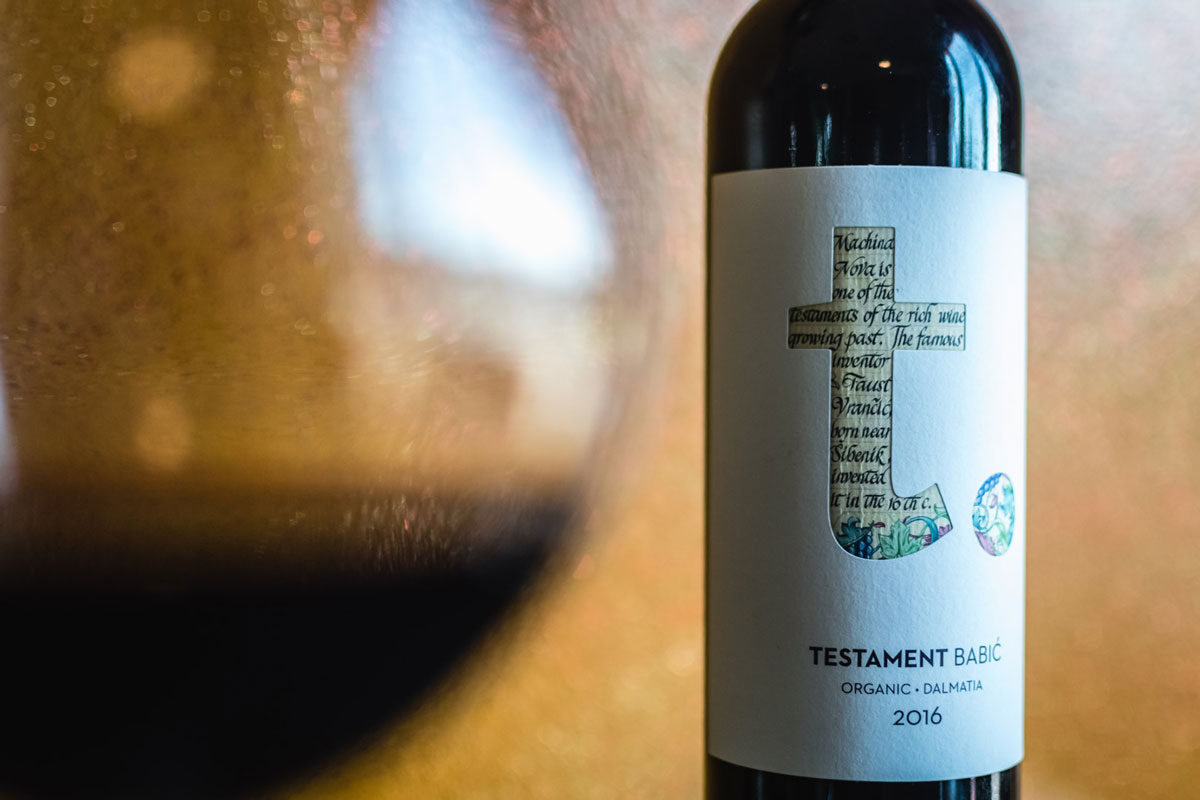
Testament Babić is a wine with a balance of fruit concentration, where the fruit combines red and darker flavours. The body is full and very powerful, but at the same time lovely and delicious.
In this Babić, you’ll find elegant cranberry at the nose and on the palate. Aged in oak, the expression is rounded with black and white pepper notes and distinctive earthiness.
One of the Testament winery’s significant achievements is Dalmatian Dog Babić. This is the first high-quality Babić wine introduced to a lower-price market.
Dalmatian Dog Babić expresses every distinct quality of the Babić grape in a very approachable manner. Succulent and charming, this dog doesn’t bite. But you certainly will enjoy a bite into its vibrant body.
In conclusion, the Testament Babić Wine is a true masterpiece of resilience and potential. Its history, unique characteristics, and revival are indeed testaments to the enduring spirit of winemaking in Dalmatia.
Gracin Winery
The company’s forerunner was a family winery founded in 2000 by Leo Gracin and his father, Ante.
The person responsible for a genuine and long-term recognition of this excellent variety is Leo Gracin, a well-known Dalmatian oenologist, consultant, and professor of oenology at the University of Split.
Gracin is certainly one of Croatia’s most notable Babić wines. It boasts an exceptional richness that exudes a delightful warmth and features fully mature tannins, depth, persistence, and character.
The palate is brimming with ripe fruit notes, primarily succulent cherries and a hint of prunes. Its minerality background further enhances its taste profile. Wine with a more pronounced minerality and Mediterranean spices.
Prgin Winery
Prgin Winery is a small family-run winery nestled in the heart of Primošten. Their speciality is producing exceptional Babić wine, crafted exclusively from Bucavac and micro-locations in Primošten.
Their focus on using grapes grown in characteristic terroir, known for producing the most specific and concentrated Babić grapes, sets them apart from other wineries.
Their young vines, planted in 2011 and 2012, required a lot of handwork to flourish. But the low yield is well worth it, as it allows for careful vinification and ageing in oak barrels.
The result is a wine that boasts a soft ruby red colour and a full fruity fragrance, dominated by the aroma of red berries like raspberry, red currant and dried cherries.
The fruity aromas are soon followed by herbal notes, both on the nose and taste, evocative of the specific terroir of Bucavac, with hints of salt, stone, and sun. The taste is lively, gentle, and rounded, leaving a lasting impression on the palate.
Delusional Winery
When Mike Pulley boldly decided to abandon his corporate lifestyle in London and follow his passion for creating a boutique winery on the stunning Dalmatian coast, his friends quickly labelled him delusional.
Yet, with dedication and hard work, he has successfully brought to life a truly remarkable wine that embodies the region’s essence.
The grape varietals used in his creation thrive under extremely low-yield conditions, producing a wine with concentrated dark cherry, herbs, and stone flavours.
To achieve the perfect balance of flavours, Mike ages the wine for three years in French and Slavonian oak. The result is a limited edition of bottles that represent the epitome of excellence.
It’s genuinely remarkable how someone with a background in the corporate world has managed to create such an authentic and multilayered wine.
The Babić variety, progressing from marasca cherry and spices to a mineral and balsamic finish, is a testament to Mike’s incredible talent and passion for winemaking.
Rak Winery
Rak Winery is dedicated to the art of grape growing and wine production in Dubrava, situated near Šibenik, within the unique climate of this northern Dalmatian region. Rak family has been steeped in the traditions of viticulture and viniculture since 1960.
Babic Rak is a dry red wine with a full body, balanced acidity, and distinctive aromas and flavours. Aged in wooden barrels for at least one year, it reflects terroir and passion for wine. This wine pairs excellently with all kinds of meat and hard cheeses.
Markus Winery
What started as a “garage winery” produced today iconic Markus Babić Franz Ferdinand, sourced from some of the oldest vineyards in the entire region. From that grape quality, Markus produced the wine that has raised the expectations from this variety to new levels.
This wine comes from a unique plot of more than a hundred-year-old vineyards. The vineyard is bordered by a dry stone wall or a stone border, less than a hectare in area, and guarantees a unique microclimate.
The name of this plot is Podgreben. The old vines struck roots in the karst and cracks in the rocks, absorbing nutrients from these depths.
The quality and concentration of these grapes are remarkable. With a bottle of Markus Babić, you will get the deepest extraction in the wine and a strong terroir signature with amazing harmony.
Matured in oak, the wine has a gentle touch of smokiness, black pepper, and vanilla spices. Powerful aromas of dark cherries, blackberries, and black currants explode on the nose.
Conclusion
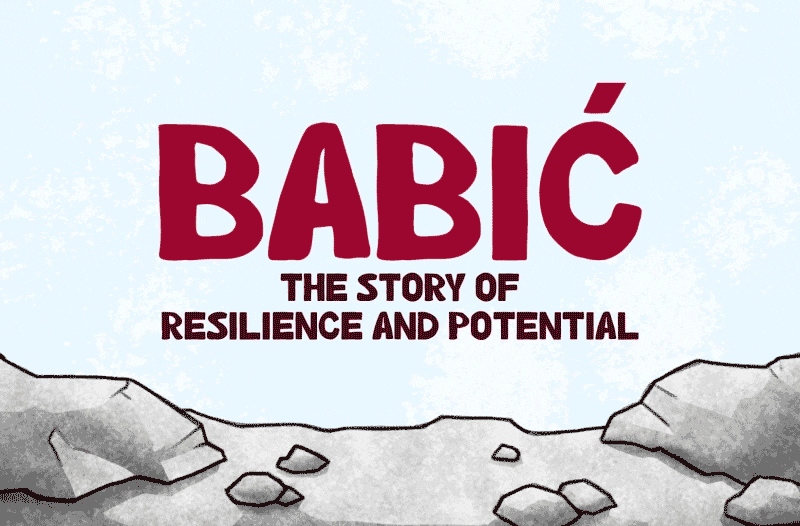 In the world of fine wines, few tales are as captivating as that of the Babić Wine. This exquisite nectar has a history that spans centuries, and its journey is one of remarkable resilience and undeniable potential. In this article, we dived into the fascinating world of Babić Wine, exploring its rich history, unique characteristics, and why it deserves a prominent place in your wine collection.
In the world of fine wines, few tales are as captivating as that of the Babić Wine. This exquisite nectar has a history that spans centuries, and its journey is one of remarkable resilience and undeniable potential. In this article, we dived into the fascinating world of Babić Wine, exploring its rich history, unique characteristics, and why it deserves a prominent place in your wine collection.
Babić Wine deserves a special place in your collection whether you’re an avid wine collector or casual enthusiast. Its story, flavour, and collectable value make it a wine that stands out.
Where to Experience Babić Wine
If you’re intrigued by the story of Babić Wine and want to savour its unique characteristics, visiting the Dalmatian region is a must. Many local wineries and tasting rooms offer the opportunity to experience this remarkable wine firsthand. Or, you can simply order on Wine&more and have your Babić delivered to your doorstep.



















